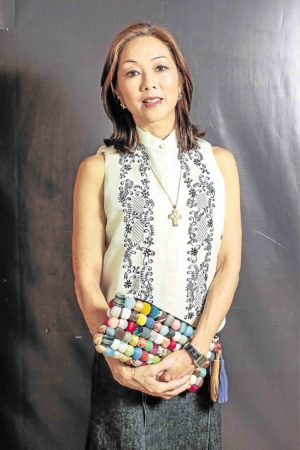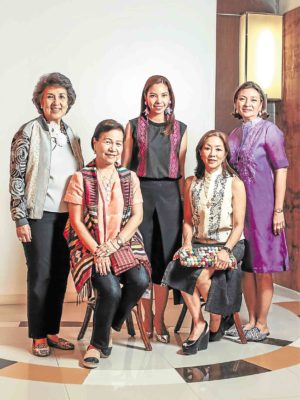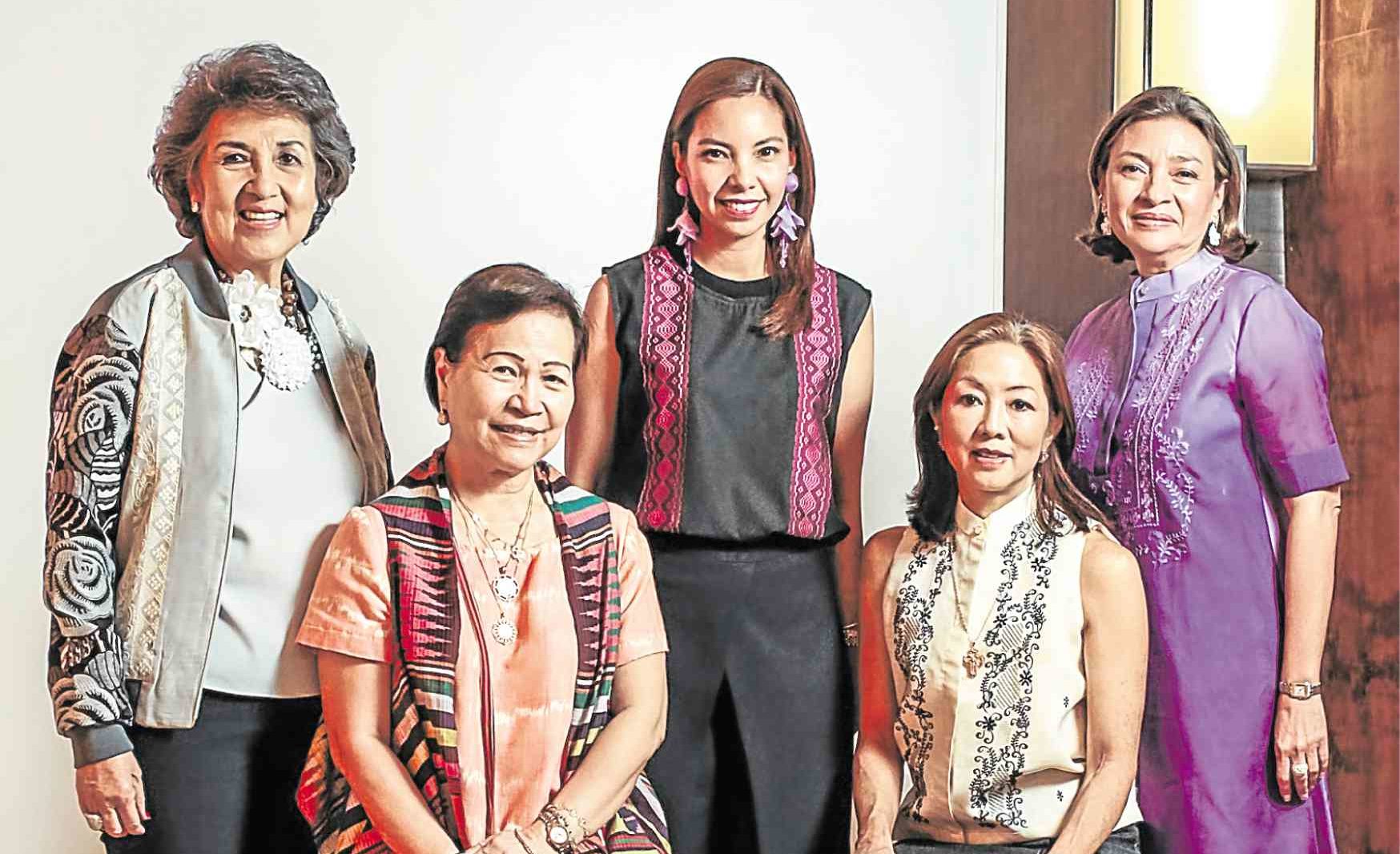
When you buy a bag, a pair of espadrilles, or a mosaic folding table from Artefino, you are helping the Bagobos in Mindanao, poor children in Negros or upholding environment sustainability.
Artefino isn’t just a bazaar for premium Filipino artisanal products, but also a social enterprise that strikes a balance between profit and social responsibility.
It was established by culture workers and entrepreneurs who want to share earnings with beneficiaries.
Artefino president Mercedes Lopez Vargas explains that unlike its regular bazaar in August, the Christmas popup version at Rockwell’s Power Plant Mall has been scaled down to 30 vendors. It focuses on select gift items and targets consumers who live within the mall’s radius.
Most of the items are for last-minute shopping for the holidays.
MaArte
Before Artefino Fair, there was the MaArte Fair. In 2009, Armita Rufino, founder of the Filipino Heritage Festival, via the Museum Foundation of the Philippines, started the modern Filipiniana artisanal fair dubbed MaArte. Proceeds were donated to the foundation to fund its projects, and the Museum of Natural History.
Vargas, Mylene Locsin (who coined “MaArte”), Dindin Araneta and Yael Buencamino then looked for vendors. The MaArte Fair opened at the National Museum before moving to Rockwell.
The annual event launched artisanal products.
Al Valenciano and his Balay ni Atong maintained the tradition of inabel fabric while transforming it into modern home decor. Anna Marie Saguil created casual barong-style shifts for her new line Amari. Erica
Concepcion-Reyes fused traditional Filipino jewelry with modern elements in Riqueza Jewelry.
Deeper engagement
“Through the years, we tended to have a deeper engagement with the artisans,” Vargas says. “We wanted to know them better and provide assistance. As a team under the Museum Foundation, we were committed to raise funds.”
However, differences of objectives between fundraising for the foundation and helping out a community—drove five members to form Artefino.
“We couldn’t do it unless we formed a legal entity and not just a community of the Museum Foundation,” Vargas explains.
Artefino debuted last August at Rockwell 8 with some 90 vendors. Vargas maintains that it shouldn’t compete with MaArte which remains as a fundraiser for the Museum Foundation.
Grant
Next year, Artefino’s legal corporate name will be StiloArtefino.
Zarah Juan, designer of the eponymous label of shoes and bags, won the first HeArteFino Development Program grant, to support her partner community, the Bagobo-Tagabawas. The products, funded by this grant, will be sold at the Artefino 2018 fair.

A few seasons ago, Juan was rejected by Vargas’ group because her products needed to appeal to a discriminating clientele. The self-taught designer came back with a vengeance, producing leather slides made in Bulacan with traditional ethnic embroidery and pompoms.
“The Zarah Juan booth was closed twice because it was mobbed,” says Vargas.
Vargas recalls that some years ago, a community in Abra was committed to revive cotton-making. Some overseas Filipino workers left their lucrative jobs overseas to return home to work and give back to their town. The communities supply social enterprises, Rags2Riches, Balay ni Atong and The Anthill.
“You feel humbled by their noble objectives,” Vargas says.
Recycling
Silnag—which makes jewelry from scrap material—exports to the United States. Carabao horns are byproducts of slaughterhouses. They are recycled into fashion accessories. A carabao horn necklace fetches $500 at Saks Fifth Avenue.
Cebu-based Floreia Sustainable Fashion recycles industrial wastes into minaudières and necklaces. It supports the education and livelihood of poor communities.
Accessory brand Island Girl uses sustainable materials such as abaca and pandan and revives the straw for embroidery.
The Great Women Project has shelves of fashion accessories and crafts. Gender Responsive Economic Actions for the Transformation of Women of the Philippine Commission on Women trains local communities and women to make their products more relevant and appealing to consumers.
Volunteer designers guide them in using sustainable materials instead of imports.
Tali Handmade by Mariel Lazaro and Liza Crespo taps female inmates in a city jail to make woven bags and accessories.
Rags2Riches creates shoulder bags with detachable components that can be used as clutches.
People from Payatas, Caloocan and Sucat have been trained to make fashion products, how to save money and improve their earning potential.
Kaayo Modern Mindanao popularized the tangkulo, the Bagobo Datu’s headpiece, into a fashionable item. Margarita Nograles and her mother Mary Ann Montemayor created this company to preserve the weaving and embroidery tradition in Mindanao by using them in modern fashion. They even sought permission from tribal elders to appropriate sacred symbols into their products.
Joy Belmonte and Looie Lobregat developed Linea Etnika, modern clothing using indigenous weaves. It was started by weavers from Yakan tribe in Lobregat’s province in Zamboanga. Belmonte’s advocacy is to provide livelihood to sewers who made the packaging in Payatas.
Elsie Standem, creative director of knitwear brand Chill by Nooks, comes from a family that developed pineapple fibers as yarns. Nooks also collaborated with cotton growers, knitters and weavers from Sulu to create its own fabric.
The mosaic folding table at the Negrense Volunteers for Change booth has been a consistent bestseller. Aside from providing livelihood programs, it has a feeding program for children in Negros and soon in Marawi.
To preserve the religious woodcarving tradition in Bohol, Fr. Val Pinlac urged carvers to make the urna or house shrine. –CONTRIBUTED









































